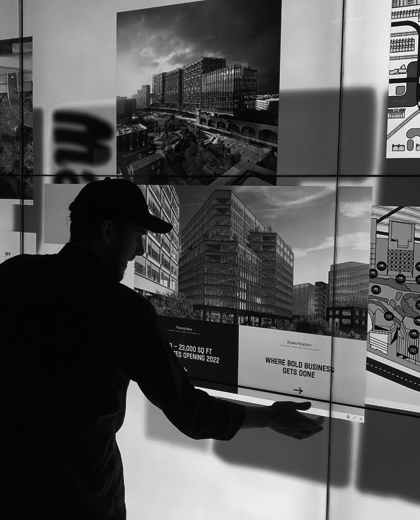Where to start
So, what can you do to ‘level up’ your kit of parts and regular suite of marketing tools – what are we suggesting to our clients to ensure they’re continually redefining the customer experience and embracing innovation;
>>Create 360 VRs in addition to your CGIs – the budget uplift is minimal and but the impact can be huge. From a fixed standing camera position, VRs allow the user to look around gaining a more immersive experience of the place and or surrounding environment. Yes, they’ve been around for a while but are still hugely beneficial.
>>A step on from this… quite literally, are fully immersive virtual tours – these allow you to seamlessly move through the space, giving the freedom of movement which static 360 VRs don’t. You can view then from any browser, desktop and mobile devices which makes them highly accessible for all clients and consumers.
>>Cinemographs are becoming increasingly popular; they are effectively a still/ fixed camera position to which gentle movement is added. These give a ‘real life’ feel and genuinely evoke emotion, breathing life into a still image. They can feel like a private moment captured in time, as such, they’re particularly popular in luxury residential marketing.
>>Gaming software such as Unreal allows the user to explore a realistic 3D environment. Using an XBOX controller, you can literally walk around the space, though doors, round corners, get into elevators and move between floors. It’s the digital version of a real-life property viewing and an incredibly powerful tool particularly for commercial occupiers to understand places, spaces and masterplans.
>>Consider the format of your 3D presentations – it’s possible that a stylised wireframe interactive model would be more useful to you that something highly rendered and photoreal. This is far more cost effective and allows you to highlight more informative content such as local contact, amenities, transport links. You can explode buildings, select plans and view data. It’s a more functional tool, but still highly engaging and a very useful part of the story.
Of course, there will always be a place for that knock out hero CGI, which leaves people guessing ‘is it an image or a photograph’ and that amazes even the most devout property expert. However, what’s clear to us having spent almost two decades creating content for property, is that we must continue to redefine the customer experience in a way that embraces innovation and enhances their experience of the ‘not yet’ built environment.
And in the face of what may well be a ‘new normal’ for the property industry, brands that take the time to understand this new digital landscape – embracing technology to craft their 3D content, thus creating richer experiences for customers – will undoubtedly earn a place of relevance in the minds of consumers and in a post-COVID world.
Thoughts
#byAssembly


